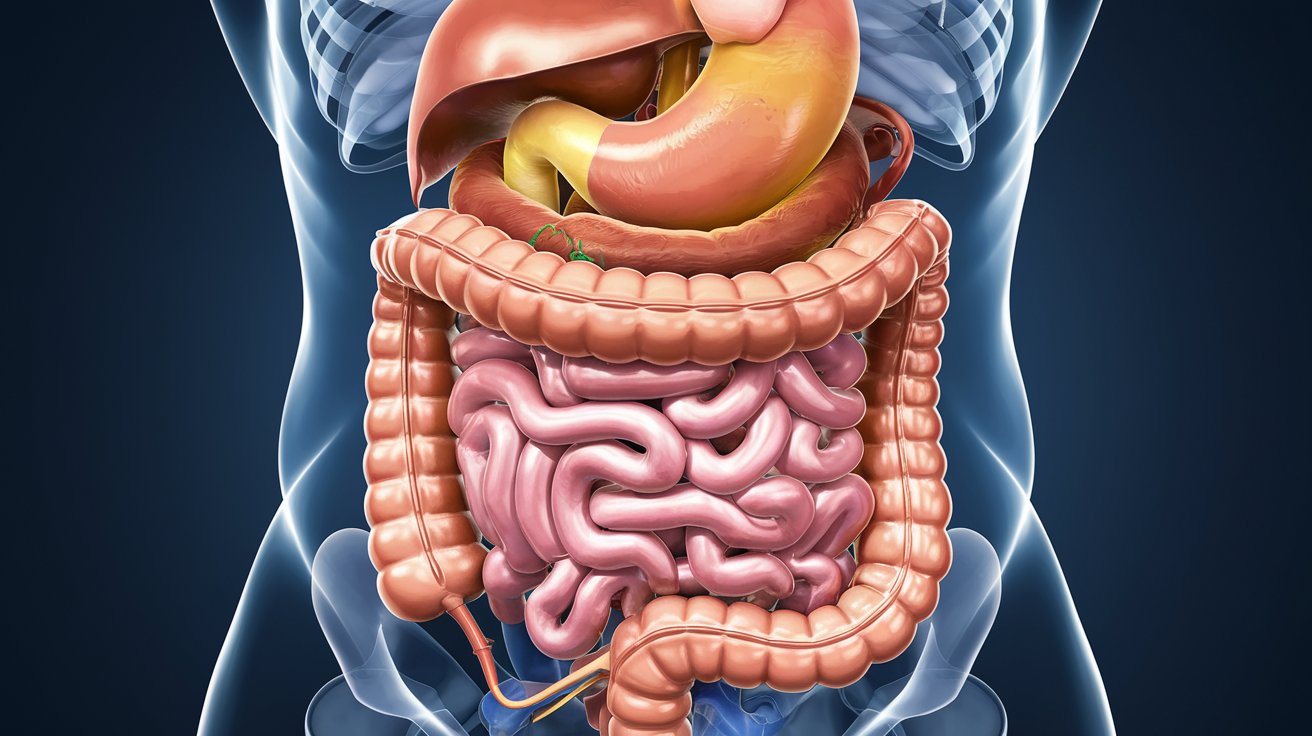
Digestive duplication might sound like something out of a science fiction novel, but it's a real medical condition. Ever wondered what happens when parts of the digestive tract duplicate? This rare anomaly can affect any part of the gastrointestinal system, from the esophagus to the rectum. Digestive duplications can vary in size and shape, sometimes forming cysts or tubular structures. They often contain a lining similar to that of the normal digestive tract, which can lead to complications like infection or obstruction. Understanding this condition can help in recognizing symptoms early and seeking appropriate treatment. Let's dive into 30 intriguing facts about this fascinating medical phenomenon.
Key Takeaways:
- Digestive duplication is a rare condition where parts of the digestive tract are duplicated, causing symptoms like abdominal pain and vomiting. Surgery is the main treatment, and early diagnosis is crucial for a good prognosis.
- Research is ongoing to better understand digestive duplication and improve treatments. Genetic studies, advanced imaging, and collaboration between medical specialists are key to helping patients with this rare condition.
What is Digestive Duplication?
Digestive duplication, also known as enteric duplication, is a rare congenital condition where parts of the digestive tract are duplicated. These duplications can occur anywhere along the gastrointestinal tract, from the mouth to the anus. Understanding this condition involves looking at various aspects, from its causes to its symptoms and treatments.
-
Digestive duplication can occur in any part of the gastrointestinal tract, but it is most commonly found in the small intestine.
-
The condition is congenital, meaning it is present at birth.
-
Digestive duplications can be cystic (closed) or tubular (open).
-
They may contain a lining similar to any part of the digestive tract, including stomach, small intestine, or colon.
-
The exact cause of digestive duplication is unknown, but it is believed to occur during embryonic development.
Symptoms and Diagnosis
Symptoms of digestive duplication can vary widely depending on the location and size of the duplication. Diagnosis often involves a combination of imaging studies and clinical evaluation.
-
Common symptoms include abdominal pain, vomiting, and intestinal obstruction.
-
In some cases, digestive duplications can lead to bleeding or infection.
-
Ultrasound is often the first imaging study used to evaluate suspected digestive duplication.
-
CT scans and MRI can provide more detailed images of the duplication and its relationship to surrounding structures.
-
Endoscopy may be used to visualize duplications that are connected to the digestive tract.
Treatment Options
Treatment for digestive duplication typically involves surgical removal of the duplicated segment. The approach to surgery can vary based on the location and complexity of the duplication.
-
Laparoscopic surgery is a minimally invasive option for removing some duplications.
-
In more complex cases, open surgery may be necessary.
-
Post-surgical recovery usually involves a hospital stay to monitor for complications.
-
In some cases, additional treatments may be needed to address complications such as infection or bleeding.
-
Long-term follow-up is important to monitor for any recurrence or complications.
Complications and Prognosis
While many patients with digestive duplication can be successfully treated, there are potential complications and long-term considerations.
-
Complications can include infection, bleeding, and intestinal obstruction.
-
In rare cases, digestive duplications can become cancerous.
-
Early diagnosis and treatment are key to preventing complications.
-
Most patients who undergo successful surgery have a good prognosis.
-
Regular follow-up with a healthcare provider is important to monitor for any long-term issues.
Interesting Facts
Digestive duplication is a fascinating condition with many unique aspects. Here are some interesting facts about this rare congenital anomaly.
-
Digestive duplications are more common in males than females.
-
The condition can occur as part of a syndrome, such as VACTERL association, which includes vertebral defects, anal atresia, cardiac defects, tracheoesophageal fistula, renal anomalies, and limb abnormalities.
-
Some duplications contain ectopic tissue, such as pancreatic or gastric tissue, which can produce enzymes or acid.
-
Digestive duplications can sometimes be detected before birth using prenatal ultrasound.
-
The first documented case of digestive duplication was reported in the 18th century.
Research and Future Directions
Ongoing research is helping to improve our understanding of digestive duplication and develop better treatments.
-
Genetic studies are being conducted to identify potential causes of digestive duplication.
-
Advances in imaging technology are improving the ability to diagnose and evaluate duplications.
-
Researchers are exploring less invasive surgical techniques for treating digestive duplication.
-
Studies are being conducted to understand the long-term outcomes of patients with digestive duplication.
-
Collaboration between pediatric surgeons, gastroenterologists, and radiologists is key to improving care for patients with this condition.
Final Thoughts on Digestive Duplication
Digestive duplication, though rare, is a fascinating condition. It involves the presence of extra segments in the digestive tract, which can cause various symptoms. These duplications can occur anywhere from the esophagus to the rectum. Symptoms might include abdominal pain, vomiting, or even bowel obstruction. Diagnosing this condition often requires imaging studies like ultrasounds or MRIs. Treatment usually involves surgical removal of the duplicated segment to prevent complications. Understanding this condition better can help in early diagnosis and effective treatment, improving patient outcomes. If you or someone you know experiences unexplained digestive issues, consulting a healthcare professional is crucial. Early intervention can make a significant difference. Digestive duplication reminds us of the complexities of the human body and the importance of medical advancements in addressing such unique conditions.
Frequently Asked Questions
Was this page helpful?
Our commitment to delivering trustworthy and engaging content is at the heart of what we do. Each fact on our site is contributed by real users like you, bringing a wealth of diverse insights and information. To ensure the highest standards of accuracy and reliability, our dedicated editors meticulously review each submission. This process guarantees that the facts we share are not only fascinating but also credible. Trust in our commitment to quality and authenticity as you explore and learn with us.
